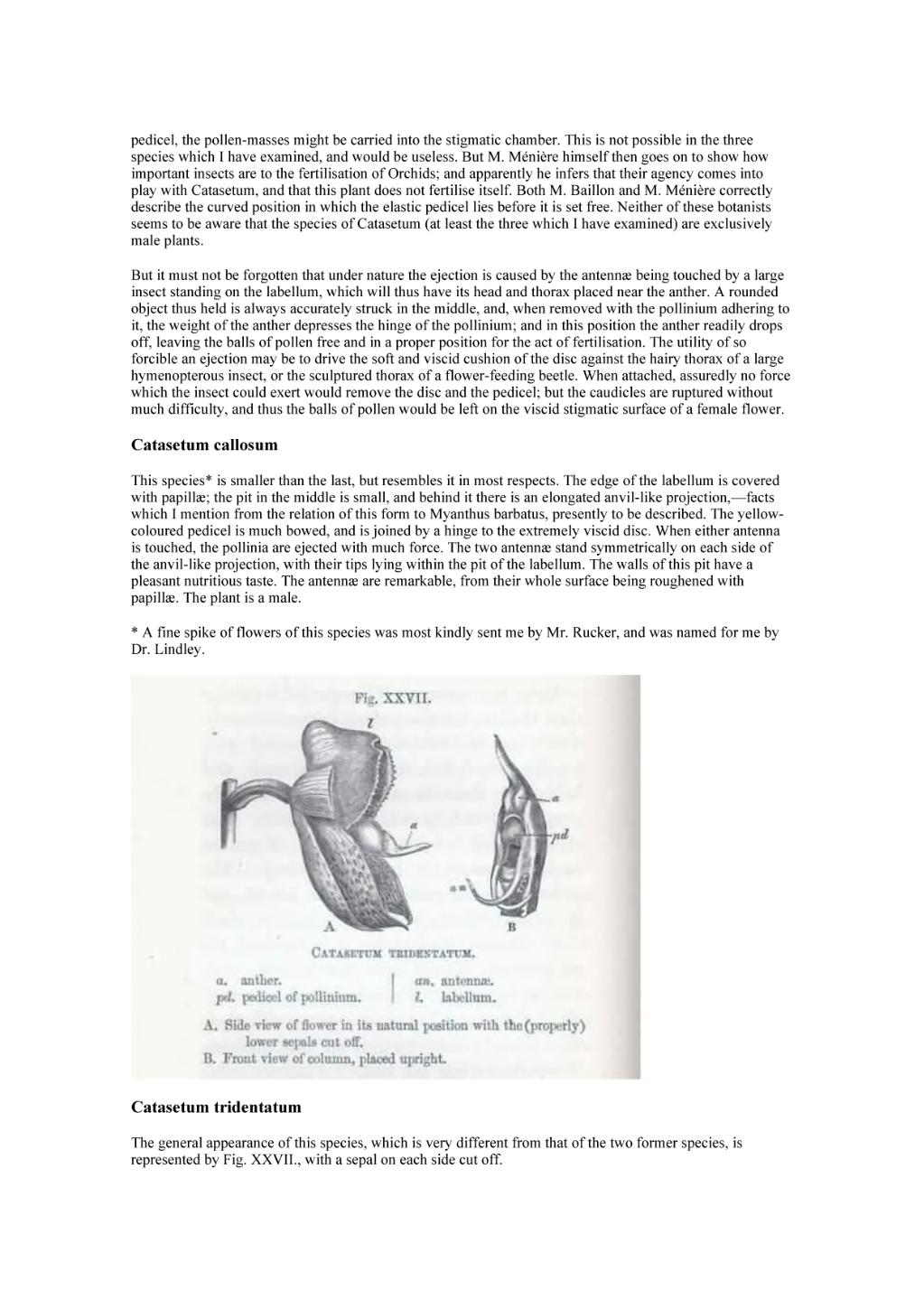But it must not be forgotten that under nature the ejection is caused by the antennæ being touched by a large insect standing on the labellum, which will thus have its head and thorax placed near the anther. A rounded object thus held is always accurately struck in the middle, and, when removed with the pollinium adhering to it, the weight of the anther depresses the hinge of the pollinium; and in this position the anther readily drops off, leaving the balls of pollen free and in a proper position for the act of fertilisation. The utility of so forcible an ejection may be to drive the soft and viscid cushion of the disc against the hairy thorax of a large hymenopterous insect, or the sculptured thorax of a flower-feeding beetle. When attached, assuredly no force which the insect could exert would remove the disc and the pedicel; but the caudicles are ruptured without much difficulty, and thus the balls of pollen would be left on the viscid stigmatic surface of a female flower.
Catasetum callosum
This species[1] is smaller than the last, but resembles it in most respects. The edge of the labellum is covered with papillæ; the pit in the middle is small, and behind it there is an elongated anvil-like projection, facts which I mention from the relation of this form to Myanthus barbatus, presently to be described. The yellow-coloured pedicel is much bowed, and is joined by a hinge to the extremely viscid disc. When either antenna is touched, the pollinia are ejected with much force. The two antennæ stand symmetrically on each side of the anvil-like projection, with their tips lying within the pit of the labellum. The walls of this pit have a pleasant nutritious taste. The antennae are remarkable, from their whole surface being roughened with papillæ. The plant is a male.
An image should appear at this position in the text. To use the entire page scan as a placeholder, edit this page and replace "{{missing image}}" with "{{raw image|On the Various Contrivances by Which British and Foreign Orchids are Fertilised by Insects, and on the Good Effects of Intercrossing.djvu/64}}". Otherwise, if you are able to provide the image then please do so. For guidance, see Wikisource:Image guidelines and Help:Adding images. |
Catasetum tridentatum
The general appearance of this species, which is very different from that of the two former species, is represented by Fig. XXVII., with a sepal on each side cut off.
- ↑ A fine spike of flowers of this species was most kindly sent me by Mr. Rucker, and was named for me by Dr. Lindley.
